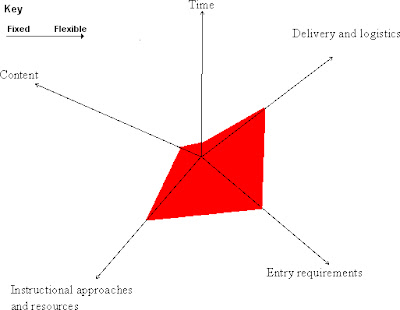Time to reflect
Picture taken from relationalcontextofteaching.edublogs.
The reason I choose two completely different course’s in activity three to investigate was I wanted to see the contrast between how those courses were implemented.
On one hand the certificate in electrical technology was very fixed in how the course was delivered and assessed. This is very similar to the course I teach and I understand the reason’s that “Trade” qualifications have to be fixed in certain areas.
· The student has to be trained in certain material and that material has to be delivered in a logical order that follows on from previous learning. (our level 5 qualification in Automotive cannot be completed if the student has not done all the previous levels from level 1 to 4)
· There is a governing body that decides what material must be learned and completed to qualify in the industry.
· If students do not learn the material in certain ways there is a high possibility that people can get injured or killed.
The next time you get an electrician in to wire up a switch or a plug in your house just think if that person didn’t pass very rigid training requirements you could get electrocuted when you use that switch or plug. The same goes for a lot of trades and medical professions.
On the other hand the course in Google Sketch up was very flexible and fully online. It still has certain flow to the course that is a logical way to learn the material.
Also one reason I see that the online course worked so well is that the program you are learning about is a computer drawing program so one of the main tools that you use to do the course (computer) is one of the main devices you will use to run the program.
This is a valid point when considering going online; in what way will the students (when qualified) interact with the technology after the course is complete.
Question
If we train students away from what they will physically use in the profession they are learning about are we being “Fair” and “responsible” to the student and are “we meeting the demands of industry”????
So my idea of flexible learning is to embrace new technology and ideas were applicable and always reflect on the tried and tested, put the students learning needs first and make sure they become “work ready” for the industry they are going into and also encourage them to embrace new technology if it will enhance their lives and their ability in the industry.
To do this I personally have to understand what the students learning needs are and understand not only where the industry is currently but where the industry could possibly head.
So the way I carry out my teaching and assessing must be flexible enough to cater for my students, but be inflexible enough to meet industry needs and expectations.





